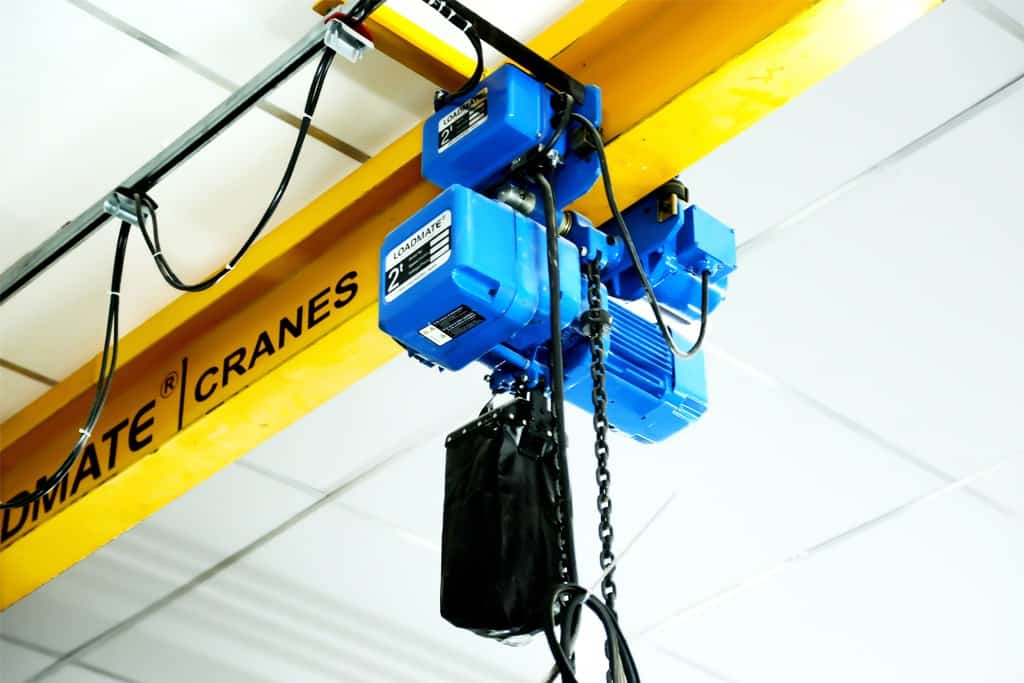Overhead crane is one of the most crucial pieces of equipment in any industrial facility. They are used for a lot of applications. They are great for lifting and lowering, which makes them ideal for loading and unloading trucks. There are four primary types of overhead cranes such as gantry cranes, monorail cranes, workstation bridge Manual chain hoist trolley, and jib cranes. So, choosing the right crane is much more than just the budget. There are two ways to factor in the search for that. Number one is based on the facility where the crane will be installed. Number two is about the crane’s application and functionality.
Evaluation of the facility:
There are multiple things to consider while installing an overhead crane. Here I will talk about all the factors of installation.
Measurement of the workplace: It is vital to measure the place which the crane will cover. Measuring the length and width, along with the facility’s height, is mandatory to look for any possible obstructions. Overlooking can disrupt the operation of the crane. There are OSHA regulations for the measurements of the building to ensure safety. It is best for the needs of the facility to choose the ideal operational system. The measurements can approximate the maximum size of the crane you can install.
Obstruction and mobility: Any obstruction in the way of installation can limit the mobility of the crane. This can impact the overall safety and functionality of the equipment. It should be mandatory to check for any obstructions on the walls, columns, and ceiling. Checking it will ensure that they don’t prohibit any ceiling or wall-mounted systems from functioning. OSHA recommends a minimum of three-inch overhead and two-inch lateral clearance to ensure safe operation.
Installation methods and assembly
Your building must provide adequate support for the installation of overhead cranes. It is important to check for the runway beams and supporting columns for the safety of the equipment. This is a vital part of your decision whether you want to be fixed or portable lifting equipment. The construction and environment of the facility is the deciding factor here. If the building lacks a wall or ceiling-mounted system requirements, you can go with gantry cranes. Gantry cranes don’t require installation unless they are track mounted.
On the other hand, a permanent system like a jib crane requires a good foundation to install. Wall or ceiling-mounted overhead cranes don’t require any floor space but need strong supporting beams and columns. Professional assistance can help you assess your building’s condition to choose your work requirement’s ideal system.
Application and functionality:
The facility functions as a host or medium to your overhead crane. The crane must fit your needs and the type of operations you want to perform. For that, there are some basic parameters to decide on your choice of a crane.
Lifting capacity: The maximum weight a crane can lift is its lifting capacity. Lifting more weight than its capacity can be dangerous and prone to accidents. To check a crane’s maximum lifting capacity, the crane goes through a lifting test. The manufacturer generally provides all the conditions and numbers for that. It mostly depends on how much weight you want your crane to lift and on the operations. The most common weight series is five, ten, sixteen, twenty, thirty-two, and fifty tonnes. To lift more, you can use a combination of different crane and hoist systems.
Go here To get about much more details:- wire rope hoists manufacturers
Lifting height: The lifting height can also be a deciding factor for your choice of cranes. It is nothing but the vertical distance between the ground and the maximum lifting position of the crane. There are guidelines that limit the maximum lifting position of most cranes to twenty meters. To lift higher than that, you need specific attachments in exchange for more expenses.
Material used in construction: Cranes are constructed to lift heavy weights, so they must be strongly built. The most commonly used materials for construction are steel and aluminium. A steel crane is harder and stronger than aluminium. Thus it provides better stability. It handles heavy-duty operations easily. Usage of steel in construction also increases the weight significantly. On the other side, aluminium is lighter and more flexible. For that, moving heavy cargo is more comfortable and faster on an aluminium crane. Also, aluminium cranes are less expensive than steel.
Operational frequency and speed: Operational frequency is an essential factor for the economical usage of the crane and avoids over-usage. There are industry standards that divide the cranes' working grade from A1 to A8, which helps to choose. If you require faster operations, you may choose accordingly.
Controls: Cranes operate using mechanical or electrical systems. Sometimes they use both. Mechanical systems allow performing heavy lifts easier. An electrical system allows the operator to operate the crane safely from a distance.
Climate: High fluctuations in temperature can create difficulties for the crane to operate. You should check if the crane can operate in various weather conditions outdoors.





Comments